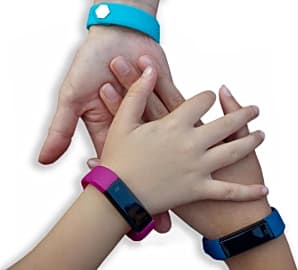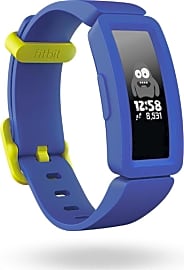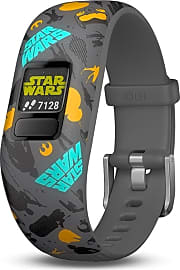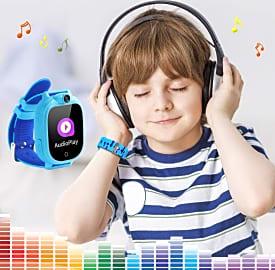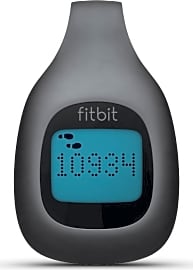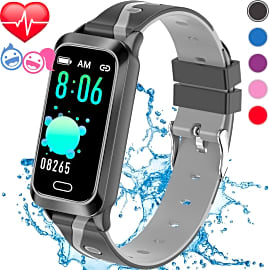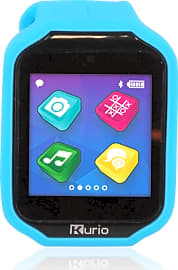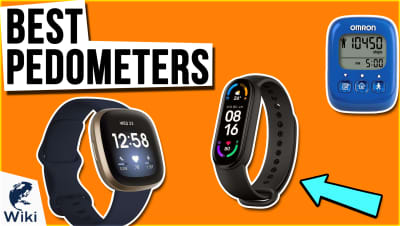The 10 Best Kids Activity Trackers

This wiki has been updated 39 times since it was first published in December of 2016. Some kids may not like to exercise, but they all love fun gadgets. That's why most of these kid-friendly activity trackers come with motivating games and apps that can keep them moving throughout the day. Of course, it isn't just young children that should learn to be fitness conscious, but older ones, as well, so we made sure to include some options ideal for teens, too. When users buy our independently chosen editorial picks, we may earn commissions to help fund the Wiki.
Editor's Notes
August 08, 2020:
Considering the high level of obesity prevalent in American kids these days, it is important you do everything possible to motivate your kids to have an active lifestyle, whether that be through games, actual exercise, or any other method. Not only will this help to prevent them from becoming overweight as children, but these healthy habits generally carry over into adulthood.
Activity trackers, like those on this list, can be a great way to keep kids conscientious of how much they are moving throughout the day. Some, like the LeapFrog LeapBand and VTech Kidizoom DX2 even feature games to help motivate them, and the Sqord N-0215 allows them to earn points and unlock rewards on the associated app.
The VTech Kidizoom DX2, Prograce Smartwatch, and Kurio Watch 2.0+ are actually full-featured smart watches, rather than simply fitness trackers, which is why they have large, vibrant screens. Because they boast a lot of games and functionality, there is less chance your son or daughter will forget to put them on in the mornings. This also makes them smart choices for younger kids who need something highly engaging.
If you have a slightly older child who wants something a bit more mature, the Fitbit Ace 2 and Garmin Vivofit Jr. 2 will probably be more suitable selections, and the Trendy Pro Fitness is a good choice for teens, as it looks just like adult fitness trackers.
June 03, 2019:
Keeping active is just as important for kids as it is for adults, especially in this day and age with the increasing child obesity epidemic. We have found a nice selection of kids activity trackers to help motivate them to move more and increase their fitness awareness. For younger children, in the four to seven year old age range, we have included the LeapFrog LeapBand and VTech Kidizoom DX2. Neither of these models requires a smartphone for use, though the experience is enhanced with the addition of one, and both contain lots of fun games to keep children engaged and motivated to increase their daily activity. Their large faces make them easy for kids to operate, too. Ideal for slightly older children, from more mature six years olds to nine or ten year olds, we have the Fitbit Ace 2 and Garmin Vivofit Jr. 2. Both of these look more similar to adult models, yet still feature kid-friendly designs and features. For example, the Fitbit Ace 2 displays fun on-screen celebrations when a goal is reached, and the Garmin Vivofit Jr. 2 can be set up with chore schedules and alerts. The Trendy Pro Because iCare and clip-on FitBit Zip are just as suitable for adults as tweens and teens, so if you want to create family activity competitions, these two models are a good choice.
How Activity Trackers Work
Cycling will have a high degree of motion in the X-axis, with minimal pulsing in the Z-axis.
Activity trackers may seem like magic, but the true concept behind how they work is actually much easier to explain. Activity trackers use a combination of sensors and mathematical equations to determine the activity being performed and the amount of calories being burned. Activity trackers make use of an accelerometer, which is just a fancy word for a sensor that measures proper acceleration.
What separates modern day activity trackers from pedometers is the use of a three-axis accelerometer versus a single axis configuration. Basic pedometers, which generally use a single axis accelerometer, can only measure forward-backward motion. A three-axis accelerometer can measure forward-backward, left-right, and up-down motion, referred to as the X, Y, and Z axis on the Cartesian coordinate system.
To determine what type of activity you are performing, an activity tracker detects the pattern of your movement. For example, running will have a very different pattern of movement than cycling. When running, there will be significant pulsing in the Z-axis (up-down motion) combined with steady movement in the X-axis (forward-backward motion). Cycling will have a high degree of motion in the X-axis, with minimal pulsing in the Z-axis. Software in the activity tracker analyzes your measurements on these three different axes to determine the type of activity being performed. It can also differentiate between high intensity activities (running) and low intensity activities (walking).
While all activity trackers collect data in the same method, they do not all analyze it in the same manner. Each software developer will create their own method of crunching the numbers. That is why not all activity trackers produce the same results when displaying the amount of calories burned. This is also why certain models may be better at detecting the intensity of gym workouts or monitoring the sudden stops and pivots in racquet sports than others.
What To Look For In A Kids Activity Tracker
Choosing the right kids activity tracker is slightly different than choosing a model for yourself. While it is still important to opt for a device that is accurate, the types of bells and whistles that a kid needs are different than what an adult needs. Kids are less diligent about caring for their items than most adults, so choosing a durable model is a smart move. Not only should it be impact resistant, but also waterproof. This way it won't be ruined if your child forgets to take it off before jumping in the pool or splashing around in a puddle.
This means models that require charging every single night will be a bad choice.
Kids generally won't remember to charge their device as often as an adult might. This means models that require charging every single night will be a bad choice. Instead, opt for one that can go multiple days between charges, or one that uses a standard watch battery. Models that use standard watch batteries usually last somewhere between six and ten months before the battery needs to be replaced. This style allows your child to forgo the responsibility of charging altogether.
Unlike adults, who might be focused on getting healthier or trying to lose weight, kids aren't motivated by such concepts. Instead, some kids' activity trackers will include games or unlockable prizes to motivate kids to be more active. With these models, the more active a child is, the quicker they will progress through the levels or earn digital content. Some devices may also give kids the ability to compete with their friends in fun activity challenges. Games and unlockable content make it more fun for your child to engage in physical activity.
Choosing an activity tracker that is customizable will allow your child to express their personality and sense of style, which is something every kid appreciates. Many models have interchangeable bands, so a child can match the color of their tracker with how they are feeling that day or their favorite t-shirt. Some also give kids the freedom to change the background graphics, font color, and more. A model that allows you to enter your child's name into the display may give them a greater sense of ownership.
Finally, you may want to consider an activity tracker that has a built-in GPS tracker. These can be connected to your smartphone and allow you to instantly check the location of your child at all times. Knowing where your child is after school, when you are at work, or while they are playing outside in the neighborhood on a Saturday afternoon greatly enhances their safety and your peace of mind.
Importance Of Physical Activity For Kids
With the prevalence of video games and social media these days, kids often spend an inordinate amount of time starting at screens. While it is true that not all screen time is recreational — learning often takes place on computers and tablets now — too much of it is still unhealthy. Too much screen time has been linked to obesity, poor posture, a tendency towards violence, behavioral issues, sleep irregularities, neck and back pain, loss of social skills, and vision problems. Even just a few days without screen time can improve a kid's social development.
It is a well-known fact that people who are more active as children experience less risk of heart disease, obesity, and diabetes as they age.
Motivating your child to play outside more or get involved in sports is a great way to naturally cut down on the amount of time they spend in front of a screen. After all, if a child comes home from school and goes outside to play with their friends or in the backyard for an hour, that is one less hour that could potentially have been spent staring at a screen.
Getting into the habit of participating in physical activity as a child is important for laying the foundation of a healthy life. It is a well-known fact that people who are more active as children experience less risk of heart disease, obesity, and diabetes as they age. They also develop stronger bones, joints, and circulatory function. People who participate in regular physical activity as children are also more likely to develop a healthy lifestyle habits as adults, including eating nutritious foods and exercising regularly.
Physical activity is also known to calm kids, making them more attentive in the classroom and promoting better, more restful sleep. It helps develop hand-eye coordination, improves aerobic fitness, and can reduce feelings of anxiety, depression, and stress.


